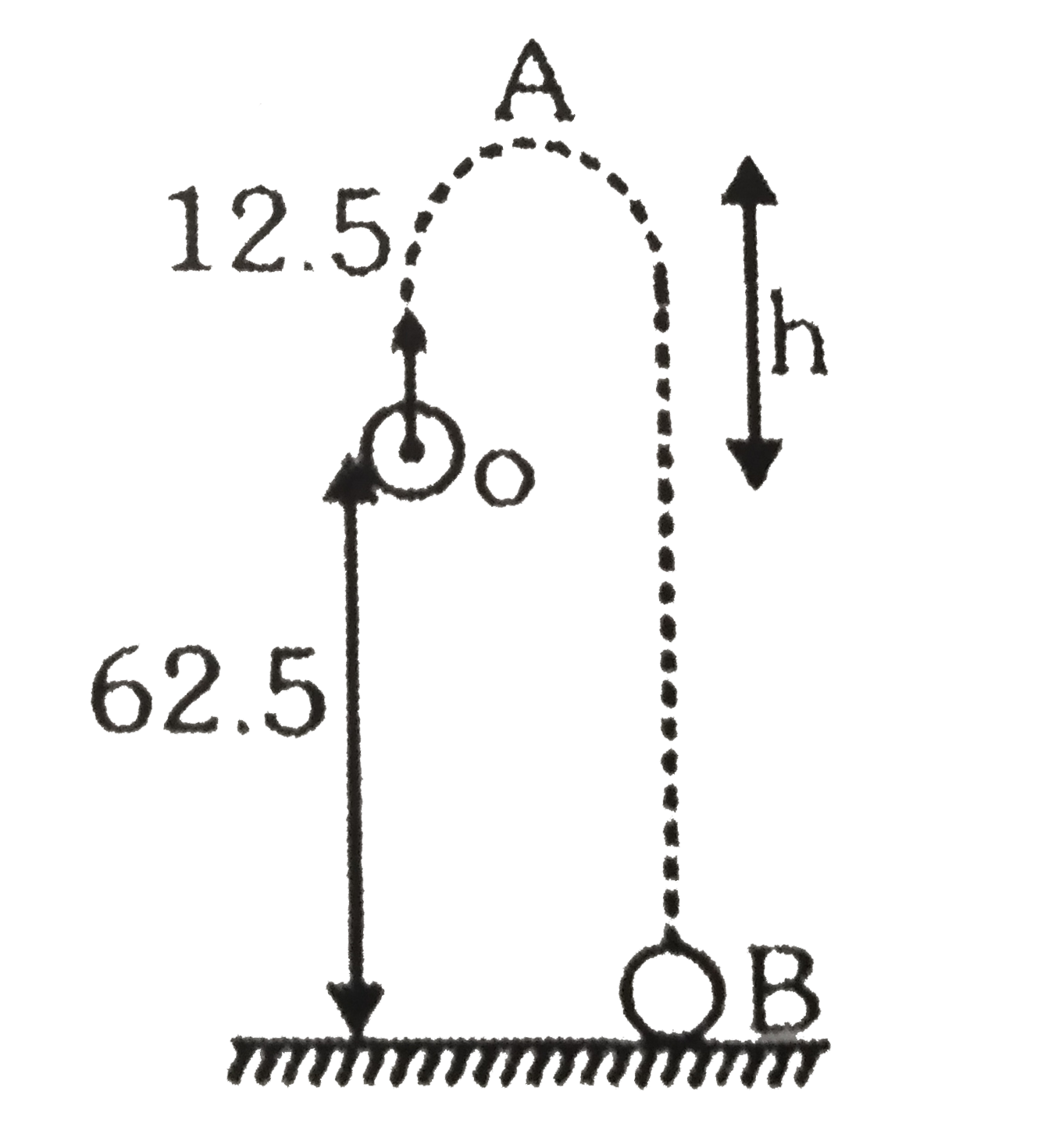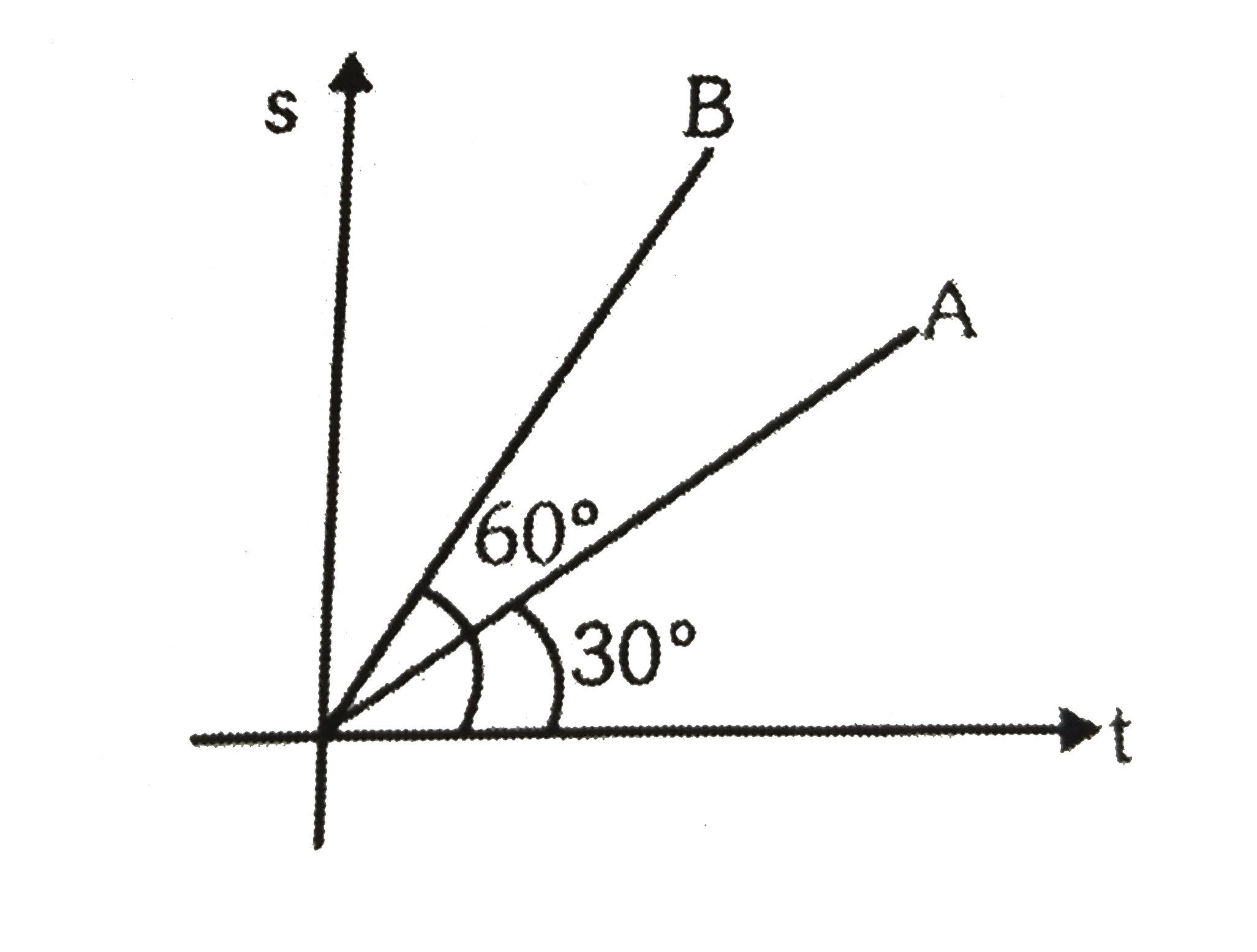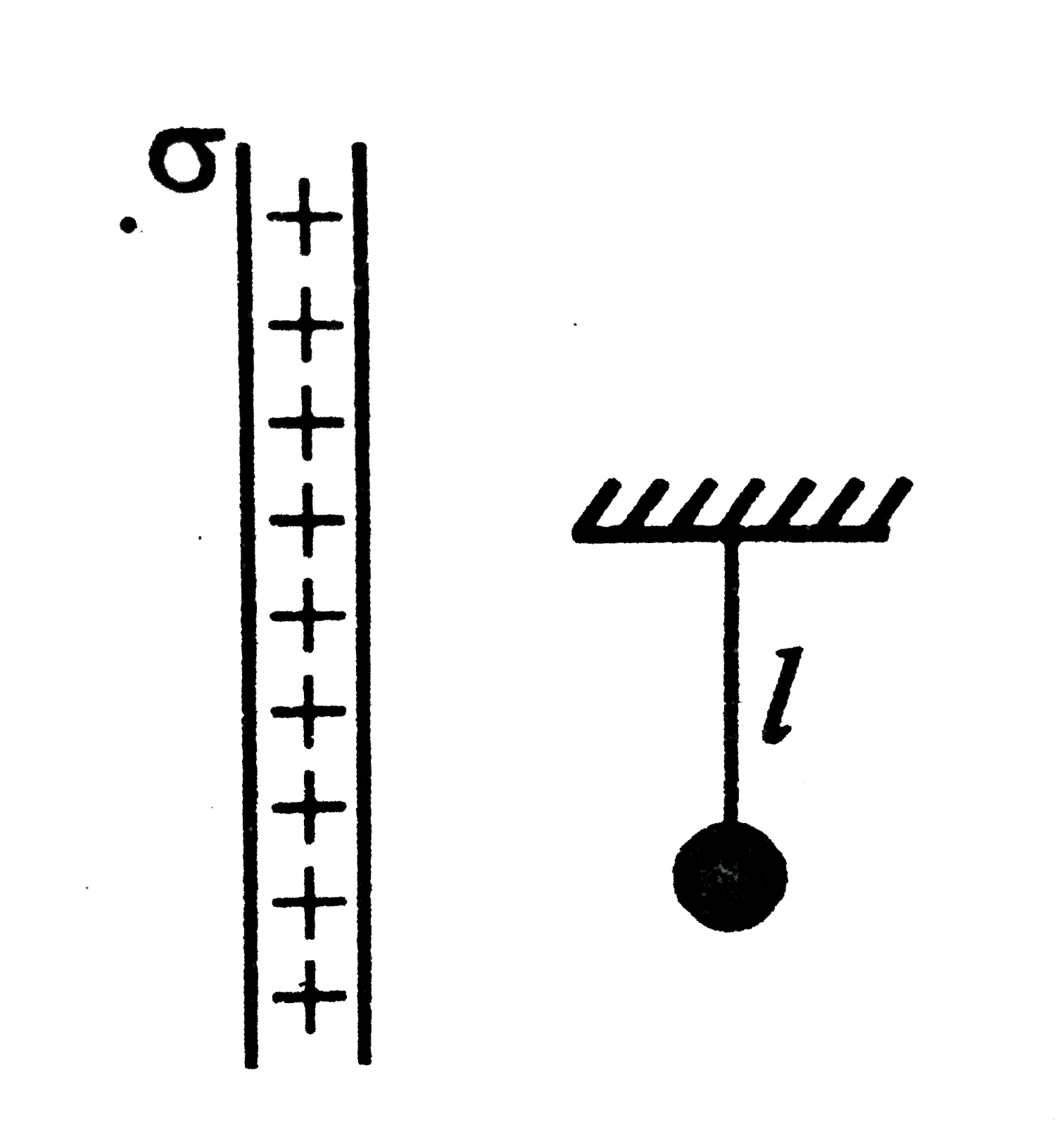A balloon starts rising from the ground with an acceleration of 1.25 m/s2 . A stone is released from the balloon after 10s. Determine
(1) maximum height of ston from ground
(2) time taken by stone to reach the ground Solution in Gujrati
Velocity of balloon after 10 sec. = 0=1.25×10
=12.5m/s
distance travelled =12at2=12(1.25)×102
=62.5 m

(i) h=u22g
=(12.5)220=7.8125 m
height from ground = 62.5+7.8125=70.31m
(ii) tOA=ug=12.510=1.25sec.
tAB=√2hABg=3.75sec.
Total time = 5 sec.
Topper's Solved these Questions
- BOOK - ALLEN CHAPTER - KINEMATICS (MOTION ALONG A STRAIGHT LINE AND MOTION IN A PLANE)EXERCISE - BEGINNER S BOX-78videos
KINEMATICS (MOTION ALONG A STRAIGHT LINE AND MOTION IN A PLANE)
- BOOK - ALLEN CHAPTER - KINEMATICS (MOTION ALONG A STRAIGHT LINE AND MOTION IN A PLANE)EXERCISE - BEGINNER S BOX-55videos
KINEMATICS (MOTION ALONG A STRAIGHT LINE AND MOTION IN A PLANE)
- BOOK - ALLEN CHAPTER - KINEMATICSEXERCISE - EXERCISE-289videos
KINEMATICS
- BOOK - ALLEN CHAPTER - MISCELLANEOUSEXERCISE - Question1videos
MISCELLANEOUS
Similar Questions
A football player kicks a ball at an angle of 30∘ with an initial speed of 20 m/s. Assuming that the ball travels in a vertical plane, calculate (a) the time at which the ball reaches the highest point (b) the maximum height reached (c) the horizontal range of the ball (d) the time for which the ball is in the air, (g=10m/s2)
05:03View Solutions-t graph of two particles A and B are shown in fig. Find the ratio of velocity of A to velocity of B.
 03:43View Solution
03:43View SolutionA student performs an experiment to determine how the range of a ball depends on the velocity with which it is projected. The "range" is the distance between the points where the ball lends and from where it was projected, assuming it lands at the same height from which it was projected. It each trial, the student uses the same baseball, and launches it at the same angle. Table shows the experimental results.
∣∣ ∣ ∣ ∣ ∣ ∣∣TrailLaunch speed(m/s)Range(m)110822031.833070.7440122.5∣∣ ∣ ∣ ∣ ∣ ∣∣
Based on this data, the student then hypothesizes that the range, R, depends on the initial speed v0 according to the following equation : R=Cvn0, where C is a constant and n is another constant.
Based on this data, the best guess for the value of n is :-07:10View SolutionA simple pendulum of length l and bob mass m is hanging in front of a large nonconducting sheet having surface charge density σ. If suddenly a charge +q is given to the bob & it is released from the position shown in figure. Find the maximum angle through which the string is deflected from vertical .
 .04:06View Solution
.04:06View SolutionA balloon starts rising from the ground with an acceleration of 1.25ms^-2 . After 8 seconds, a stone is released from the balloon. After releasing, the stone will:
04:36View SolutionA balloon starts rising from ground with an acceleration of 1.25m/sec2. A 8 seconds a stone is released from the balloon. The maximum height from the ground reached by stone will be.
03:20View SolutionA balloon starts rising from the ground with an acceleration 2ms−2. After 5second,as→≠isre≤asedomtheball∞on.F∈dthetimetakenbythes→≠→reachthegroundafteritsre≤aseand→talheightaa∈edbyball∞onwhens→≠reachestheground.Takeg==10 ms^(-2).
03:27View SolutionA balloon is going up with a uniform speed 20 m/s. It was at a height of 100 m from ground, when a stone is dropped from its basket. Find the time taken by the stone to reach the groimd and the height of the balloon from the ground, when stone hits the ground. (Take g = 10 m//s^(2) )
05:57View SolutionA balloon starts rising from the ground with an acceleration of 1.25 m//s^(2) . A stone is released from the balloon after 10s. Determine (1) maximum height of ston from ground (2) time taken by stone to reach the ground
05:30View SolutionA balloon starts rising from the ground with a constant acceleration of 1.25m/s2. After 8 s, a stone is released from the balloon. Find the time taken by the stone to reach the ground. (Take g=10m/s2)
04:32View SolutionA balloon starts rising from ground from rest with an upward acceleration 2m//s^(2) . Just after 1 s, a stone is dropped from it. The time taken by stone to strike the ground is nearly
05:49View SolutionA balloon starts rising from the ground with an acceleration of 1.25 m/s2. A stone is released from the balloon after 10s. Determine
(i) maximum height of stone from the ground.
(ii) time taken by stone to reach the ground.
(Assume, g = 10 m/s2)01:29View SolutionA balloon starts rising from the ground with a constant acceleration of 1.25 m/ s^2 . After 8s, a stone is released from the balloon. Find the time taken by the stone to reach the ground. (Assume, g = 10m/ s^2 )
05:19View Solutionএকটি বেলুন ত্বরণসহ ওপরের দিকে উঠছে। ভূমি থেকে বেলুনটির উচ্চতা যখন 50.4m তখন বেলুন থেকে একটি পাথর ফেলা হল। পাথরটির 6s পরে ভূমি স্পর্শ করল। পাথরটি ফেলার মুহূর্তে বেলুনটির বেগ কত ছিল?
03:59View SolutionA balloon starts rising from thee ground with an acceleration of 1.25 m//s^(2) . After 8 s, a stone is released from the balloon. The stone will (taking g = 10 ms^(-2) )
05:01View SolutionA balloon rises with uniform velocity of 10ms−1. When the balloon is at a height of 75 m if a stone is dropped from it the time taken by it to reach the ground is
05:16View Solution

